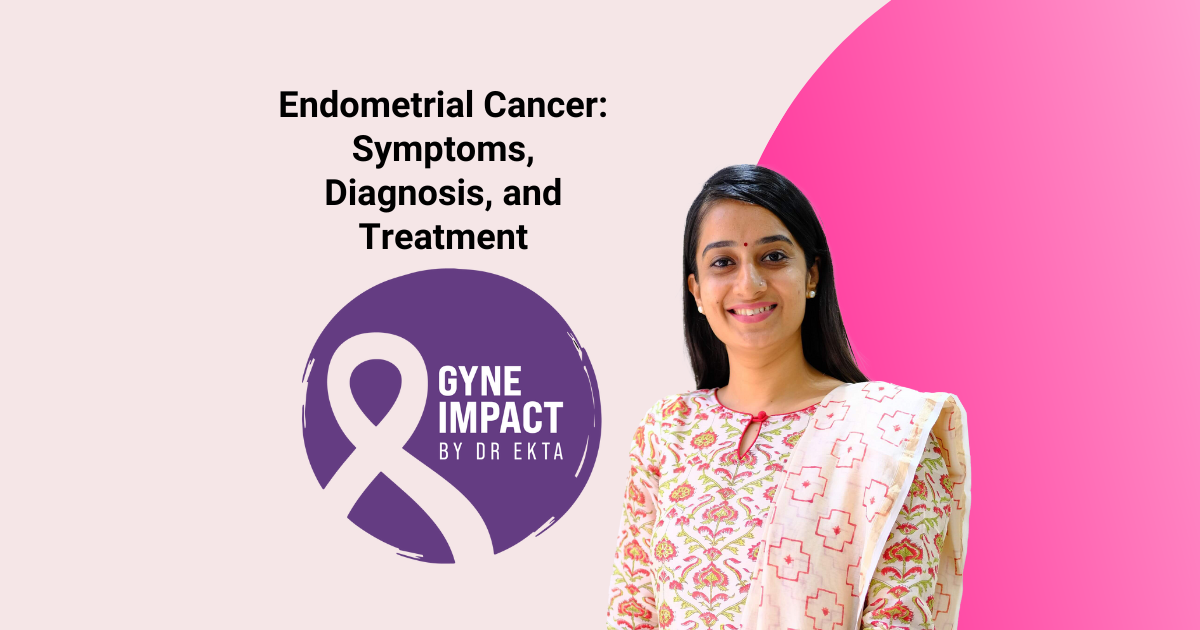Endometrial cancer is one of the most common types of gynecological cancers. It begins in the lining of the uterus, called the endometrium. When diagnosed early, this type of cancer is highly treatable. In this blog, we will explore the symptoms, how it’s diagnosed, available treatment options, and important information every woman should know.
What is Endometrial Cancer?
Endometrial cancer develops when cells in the lining of the uterus grow uncontrollably. It is most commonly seen in postmenopausal women but can also affect younger women. Understanding what causes it and the early warning signs can help in seeking timely medical attention.
Risk Factors
Several health and lifestyle-related factors can increase the risk of developing endometrial cancer:
- Age (more common after age 50)
- Obesity or being overweight
- Diabetes or high blood pressure
- Estrogen-only hormone replacement therapy
- Family history of uterine or colon cancer
- Polycystic ovary syndrome (PCOS)
- Never having been pregnant
These are among the most well-known risk factors for uterine cancer, and understanding them can support earlier detection and prevention.
Common Symptoms of Endometrial Cancer
Recognizing the symptoms of endometrial cancer early increases the chance of successful treatment. Here are the most common signs to watch for:
- Abnormal vaginal bleeding, especially after menopause
- Pelvic pain or pressure
- Pain during intercourse
- Unusual vaginal discharge (thin, white or blood-tinged)
- Sudden weight loss without a clear reason
If you experience any of these symptoms, it’s important to speak with your gynecologist.
Read more about cancer symptoms women should never ignore.
How Endometrial Cancer is Diagnosed
If your doctor suspects endometrial cancer based on your symptoms, several tests may be recommended.
Diagnostic Steps
- Pelvic examination: A physical exam to check the uterus and surrounding organs.
- Transvaginal ultrasound: Helps evaluate the thickness of the endometrial lining.
- Endometrial biopsy: A sample of tissue is taken from the uterine lining for testing.
- Hysteroscopy: A small camera is inserted into the uterus to get a closer look.
- Dilation and curettage (D&C): A more comprehensive sampling procedure if biopsy results are unclear.
These methods answer the common question: how is endometrial cancer diagnosed, and they are crucial for an accurate and timely diagnosis.
Types and Staging of Endometrial Cancer
Knowing the type and stage of endometrial cancer helps doctors choose the most appropriate treatment.
Types
- Type I: More common and linked to excess estrogen. Usually slow-growing.
- Type II: Less common, more aggressive, and not related to estrogen.
Stages
- Stage I: Cancer is only in the uterus.
- Stage II: Cancer has spread to the cervix.
- Stage III: Cancer has spread to nearby tissues or lymph nodes.
- Stage IV: Cancer has spread to distant organs like the bladder or bowel.
Treatment Options for Endometrial Cancer
Treatment depends on the stage, type, and overall health of the patient. Most women undergo a combination of therapies.
Surgery
- Hysterectomy: Removal of the uterus, and often the fallopian tubes and ovaries.
- Lymph node removal: Helps determine how far the cancer has spread.
Radiation Therapy
- Used to kill cancer cells or shrink tumors before or after surgery.
- External beam radiation or internal brachytherapy may be recommended.
Hormonal Therapy
- Works by lowering estrogen levels or blocking its effects.
- Common in early-stage or slow-growing cancers.
Chemotherapy
- Used for advanced or aggressive cancers.
- Often given in cycles through IV infusion.
Targeted Therapy & Immunotherapy
- Newer treatments that aim at specific cancer cell features.
- May be used in combination with other therapies.
There are several endometrial cancer treatment options available, and your care team will recommend a plan that is best suited for your specific condition.
Living with Endometrial Cancer
A diagnosis of endometrial cancer can be emotionally and physically challenging. However, with proper care and support, many women continue to lead fulfilling lives.
Coping and Support
- Join a cancer support group to share experiences
- Maintain a healthy diet and regular exercise routine
- Seek emotional counseling if feeling overwhelmed
- Keep regular follow-up appointments
Receiving emotional support after uterine cancer diagnosis can improve overall well-being and help manage daily challenges more effectively.
Can Endometrial Cancer Be Prevented?
While not all cases can be prevented, certain actions may reduce your risk.
Prevention Tips
- Maintain a healthy weight
- Manage chronic conditions like diabetes and hypertension
- Use hormonal therapies only under medical supervision
- Report abnormal bleeding promptly
- Consider birth control pills, which may lower the risk in some women
If you’re wondering how to prevent endometrial cancer, these lifestyle choices can play a significant role in reducing your chances.
Trusted References
- National Cancer Institute – Endometrial Cancer
- CDC – Uterine Cancer Information
- American Cancer Society – Treatment and Support
Final Thoughts
Endometrial cancer is a serious but often treatable condition when caught early. By knowing the symptoms, risk factors, and available treatments, women can take charge of their health. If you experience unusual vaginal bleeding or pelvic discomfort, don’t delay speak to a oncologist. Timely action could make all the difference.

